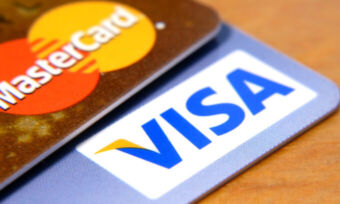Visa and Diners Club are two popular payment networks, but there are a few key differences between the two. We explore further.
What is Visa?
Visa was created in 1959, when Bank of America launched BankAmericard, the first card with a revolving credit feature. It later expanded internationally and introduced debit cards. In 1976, it changed its name to Visa, a name they claim to sound the same in all languages. Visa cards are available in Australia through a large number of financial institutions, including the big banks.
What is Diners Club?
Diners Club created the world’s first charge card in 1950 after its founder went to pay for dinner and realised he had forgotten his wallet. To avoid the embarrassment of forgetting cash in the future, he created the Diners Club Card. As of 1 June 2022, the National Australia Bank limited (NAB) is the sole owner of Diners Club Pty Ltd in Australia after acquiring Citigroup’s consumer banking business.
What’s the difference between Visa and Diners Club?
Although both are payment networks, Visa and Diners Club are quite different on many levels. We can start with their different business approaches.
Diners Club:
- is a payment system as well as a ‘direct banking’ company, according to Diners Club.
- issues cards directly to consumers, finances payments and processes the transfers.
- Charge cards are the only cards that Diners Club offers. Charge cards have no pre-set spending limit and customers must pay off the full balance on the card each month or they will be charged a fee.
- Diners Club determines the card’s features and rewards structure.
Visa:
- is a digital payment processing system but does not issue cards.
- does not issue cards directly to consumers, but allows financial institutions to brand their card products as ‘Visa’ and use the Visa network.
- Credit cards, debit cards, prepaid cards and gift cards can all be branded as Visa.
- The issuing financial institution determines the card’s features and rewards structure.
Where are Visa and Diners Club cards accepted?
Visa says its cards are accepted at more than 80 million merchant locations in over 200 countries and territories worldwide. Visa says it accounted for 255 billion total transactions in the past year.
Diners Club says it’s accepted at millions of merchant locations as well as having 1.2 million cash access locations and ATMs in over 200 countries and territories. Diners Club members also have the option of getting a Companion World Mastercard Card – a charge card which Diners Club says operates in the same way as the Diners Club Card. Diners Club says the World Mastercard is accepted at over 33 million locations across 210 countries. (There could be an added cost to sign up for, and maintain, the Mastercard.)
Is Visa or Diners Club better for rewards programs?
Both Visa and Diners Club provide their cardholders opportunities to earn Rewards Points and other potential features. We explore them here:
Visa
There are two types of rewards programs that a Visa card holder may be able to access.
- Visa-network rewards program: Depending on the Visa credit card, Visa states that its rewards program could offer cardholders a range of discounts and deals on food, music, sport, fashion, film and more. Visa also offers a Visa Concierge service (to eligible users), which it describes as a 24/7 digital personal assistant and lifestyle guide, and allows you to self-book your travel and holiday activities. You may also receive additional rewards and benefits, depending on the specific Visa card and card provider.
- Card-issuer rewards programs: Some Visa credit cards are linked to other rewards and frequent flyer programs (such as Qantas and Velocity), so you can earn points on your eligible spending. The financial institution may have its own rewards program which card users may be able to access.
Diners Club
Diners Club members can earn Diners Club Rewards, which can be:
- Redeemed on flights, hotels, products as well as cashbacks and more.
- Transferred to Flybuys points and some airline frequent flyer points, including Emirates Skywards, Singapore Airlines KrisFlyer and Velocity Frequent Flyer points.
Diners Club members can also access over 1,000 airport lounges in over 140 countries worldwide and receive complimentary travel insurance and purchase insurance.
Should you choose Visa or Diners Club?
So which is best, Visa or Diners Club? For the vast majority, the answer will depend on how you use your card. We’ve created a list of factors to consider when weighing up the potential advantages and disadvantages between the two providers:
- Card types: One thing to note is whether you want to accrue credit debt.
- Visa: Outside of credit cards, Visa also offers debit cards, prepaid cards and gift cards.
- Diners Club: Diners Club only offers charge cards, which doesn’t have a pre-set spending limit but you’ll need to pay off your balance in full each month.
- Where you can use them:
- Visa: Accepted in more places, so it may be the preferred option for those who choose a credit card for convenience.
- Diners Club: Diners Club cards are not accepted in as many places as Visa, however, the companion Mastercard (which could cost more to have) could extend this coverage.
- Rewards:
- Visa: The rewards program offer will depend on the specific card you choose and the card provider.
- Diners Club: Offers its own rewards program where you can earn Diners Club Rewards, which can be transferred to participating frequent flyer programs or redeemed for flights, hotels and other products.
- Surcharges: Some businesses charge payment surcharges on card payments. The ACCC has banned excessive payment surcharges for certain payment types, including Visa credit, debit and prepaid cards. That means businesses can’t charge a customer more than what it costs them to process the payment. Diners Club payments are not covered by this ban.
In Australia, it is generally cheaper for merchants to accept Visa payments compared to Diners club payments. According to data from the Reserve Bank of Australia, the average merchant fee is 0.84% of the transaction value for Visa credit card transactions and 0.46% for Visa debit card transactions. Diners Club fees are more expensive and have an average merchant fee of around 1.74% of the transaction value.
At the end of the day, it can be more important to consider the specific card in question, rather than the payment network. Consider why you are taking out a card in the first place and look at factors like the interest rate, ongoing fees, features and rewards on offer.
Cover image source: Oakland Images/Shutterstock.com
Thanks for visiting Canstar, Australia’s biggest financial comparison site*
This content was reviewed by Deputy Editor, Canstar Amanda Horswill as part of our fact-checking process.







Share this article